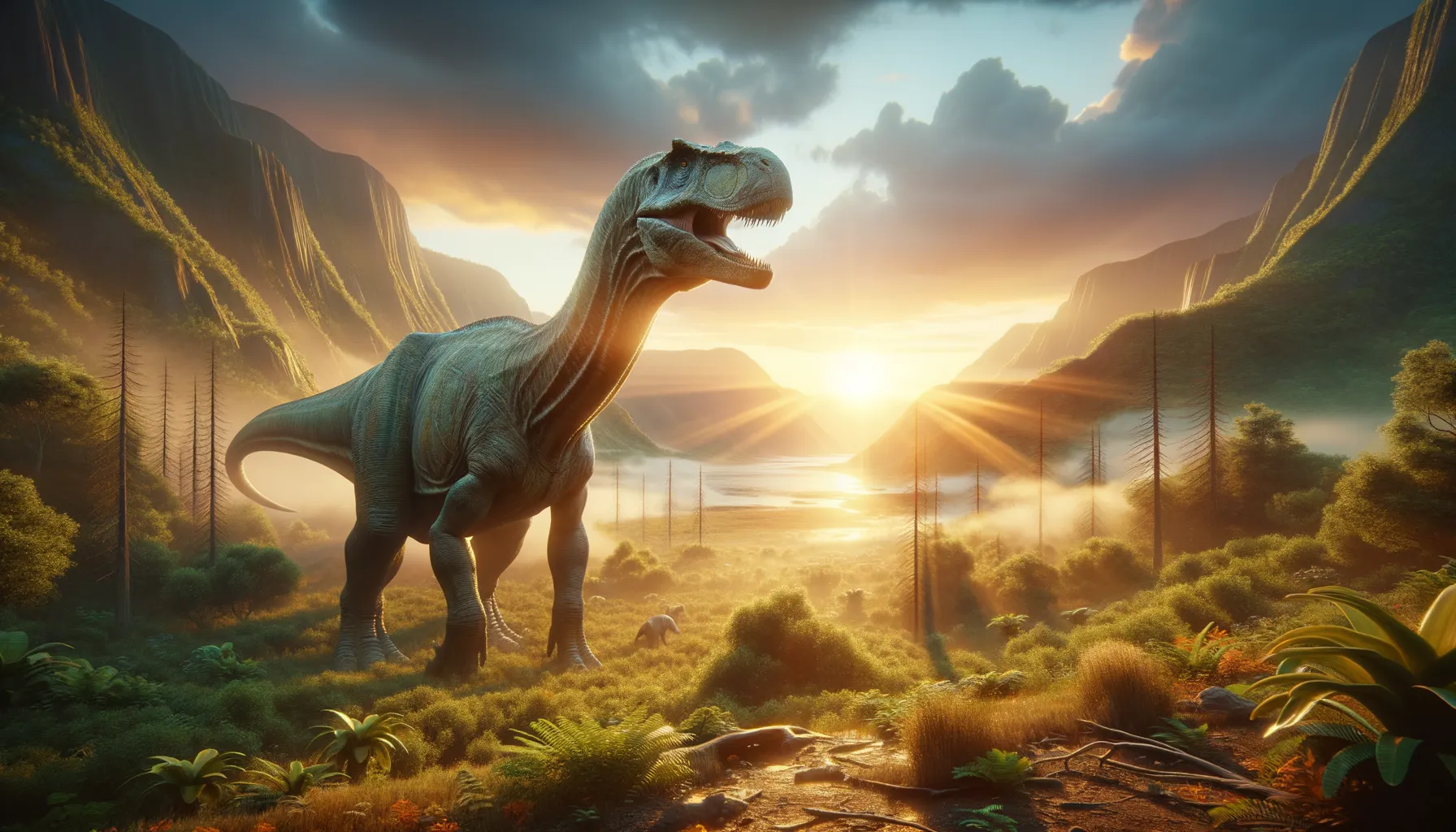
Morosaurus
The gentle giant of Jurassic realms.
Period
Jurassic
Length
Up to 30 feet long.
Height
Around 12 feet tall.
Weight
Approximately 5 tons.
Morosaurus was a large herbivorous dinosaur from the Jurassic period. With its massive body and long neck, it resembled more famous sauropods like Diplodocus but was smaller in comparison. Curiously, Morosaurus is actually known from incomplete fossil records, and much of its physical description is inferred from relatives. It was part of the fascinating evolutionary story of sauropods that roamed ancient Earth.
Diet
Morosaurus was a herbivore, subsisting on a variety of vegetation. Its diet likely consisted of leaves, ferns, and conifers available in its Jurassic environment.
Hunting
As an herbivore, Morosaurus did not hunt for meat. It spent a large portion of its day foraging for plant material to sustain its massive size.
Environmental challenges
Morosaurus faced environmental challenges such as fluctuations in food availability caused by changes in climate and vegetation. It also had to manage threats from predators, including theropod dinosaurs. Water scarcity in different seasons could have been a challenge as well. These factors required Morosaurus to adapt to shifting resources and competitive pressures within its habitat.
Speed
Relatively slow, reflecting its large size.
Lifespan
Estimated to be several decades.
First discovery
Discovered in 1883 in North America.
Fun Facts
- Morosaurus was a long-necked dinosaur that belonged to the sauropod family, which includes some of the largest plant-eating dinosaurs.
- These dinosaurs lived during the late Jurassic period, which was about 156 to 145 million years ago.
- Morosaurus is known for being one of the smaller sauropods compared to its gigantic relatives like Brachiosaurus and Diplodocus.
- Fossil remains of Morosaurus were mainly found in what is now the western United States, particularly in the Morrison Formation.
- The name Morosaurus means 'fool lizard', which humorously suggests this dinosaur might not have been seen as the brightest, but naming conventions are not always scientifically based.
- Despite their large size, sauropods like Morosaurus likely moved in herds to protect themselves against predators.
Growth and Development
The growth of Morosaurus likely involved rapid periods during the early years to reach a size less susceptible to predation. Like other sauropods, it would have had a growth pattern optimized for gaining mass and height quickly in its juvenile stages. Its development would continue at a slower rate after reaching maturity, with its large size serving as a defense mechanism.
Habitat
Morosaurus inhabited vast floodplains and forested environments in North America. These ecosystems provided plentiful leafy vegetation and a favorable climate during the Jurassic period. Its habitat was home to diverse plant life that supported its diet and offered cover from potential predators.
Interaction with other species
Morosaurus shared its environment with numerous other dinosaur species, both herbivorous and carnivorous. It may have moved in herds, providing safety from predators. Coexistence likely involved competition for food with other large herbivores. Mutual benefits such as mixed-species herds could have offered protection from predators and aid in navigating their environment.
Natural lifespan
Morosaurus had a natural lifespan of several decades.
Reproduction
Morosaurus reproduced through oviparity, laying eggs. Nests were likely built in secluded areas, using vegetation to camouflage the eggs from predators. Parental care was probably minimal after the eggs were laid, with young Morosaurus growing rapidly to survive predatory threats.
Social behaviour
Morosaurus may have exhibited social behaviors typical of sauropods, such as herding. Herding provided advantages like collective vigilance and protection against aggressive predators. Interactions within its species could involve movement coordination and vocal communication for maintaining group cohesion.
Fossil locations
Morosaurus fossils have been discovered primarily in the western United States, particularly in Wyoming. These fossils have helped piece together its skeletal structure and led to insights into its relation to other sauropods. Despite fragmentary remains, each find has contributed to a better understanding of its evolutionary lineage within the enormous and diverse sauropod clade.
